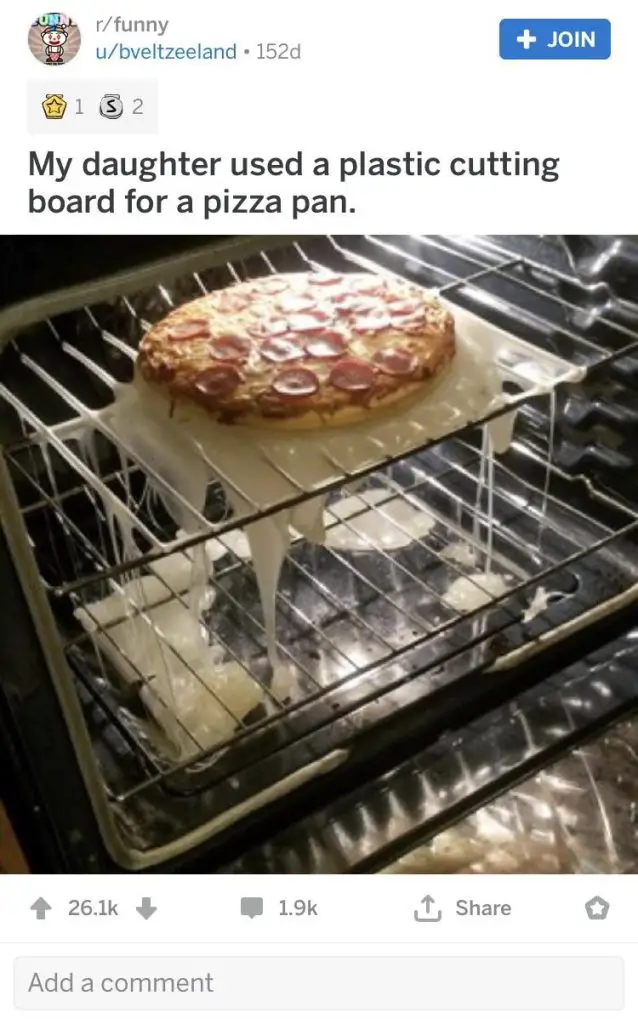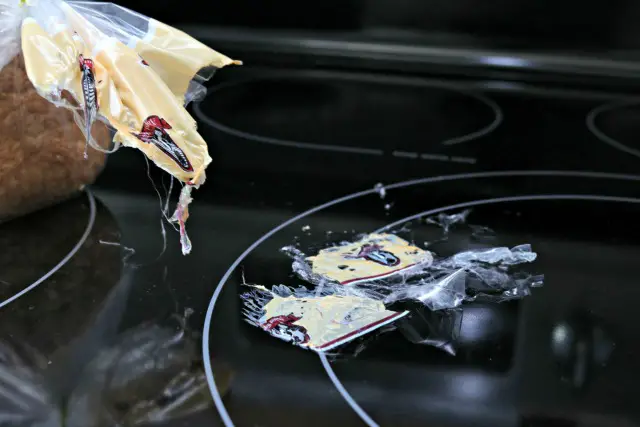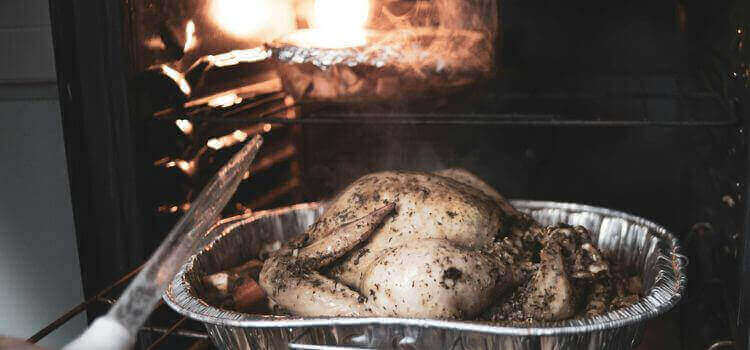It is NOT safe to melt plastic in the oven as it can release harmful fumes. Melting plastic in the oven can result in the release of toxic fumes that can pose health risks, including respiratory issues and nervous system damage.
Additionally, the melted plastic can contaminate food and cause potential harm if consumed. The combination of heat and plastic creates a potential hazard that should be avoided to maintain a safe and healthy environment for yourself and others. It is crucial to be mindful of proper plastic usage and disposal to prevent any adverse effects on health and the environment.
Always prioritize safety by following recommended guidelines for handling and disposing of plastic materials.
What Happens When You Melt Plastic In The Oven
Melting plastic in the oven can release harmful fumes and chemicals into the air, posing health risks. These fumes can lead to respiratory issues, skin irritations, and organ damage. It’s not safe to melt plastic in the oven as it can contaminate food and cause potential health hazards.
Release Of Hazardous Chemicals
Melting plastic in the oven releases toxic fumes that can be harmful to your health. These fumes contain hazardous chemicals that, when inhaled, can lead to various health issues. It is essential to avoid melting plastic in the oven to prevent the release of these harmful substances into your home environment.
Potential Damage To Oven
Melting plastic in the oven can cause severe damage to the appliance. The high temperatures required to melt plastic can result in melted plastic residue that is difficult to remove. This residue can damage the oven’s interior, affecting its functionality and aesthetic appeal. It is recommended to never melt plastic in the oven to avoid costly repairs or replacement of the appliance.
Types Of Plastic That Should Not Be Heated
Heating certain plastics in the oven can release toxic fumes, posing health risks. Avoid heating PVC, PET, and polystyrene plastics, as they can emit harmful substances when melted. Opt for safer materials like silicone or glass for oven use instead.
Polyvinyl Chloride (pvc): PVC should not be heated in the oven as it can release toxic chemicals when melted.
Polystyrene (styrofoam): Heating Styrofoam in the oven can emit harmful fumes and may contaminate food.
Impact On Food Safety
Release Of Toxins Into Food
When plastic is melted in the oven, there is a risk of toxic substances leaching into the food being prepared, posing a severe threat to food safety. Plastics are composed of various chemicals, including BPA and phthalates, which can contaminate the food during the heating process. The high temperatures in the oven can cause the plastic to break down and release harmful toxins, which then seep into the food items.
Health Risks Associated With Consuming Contaminated Food
Consuming food that has been contaminated by melted plastic can lead to several health risks. Exposure to toxins such as BPA and phthalates can result in adverse health effects, including digestive issues, reproductive problems, and an increased risk of certain cancers. Ingesting contaminated food may also lead to damages to the liver, kidneys, and respiratory system, as well as contribute to various other organ damages and neurological disorders.

Credit: www.reddit.com
Alternatives To Melting Plastic In The Oven
Melting plastic in the oven may not be the safest option due to the potential release of harmful fumes and the risk of plastic catching fire or melting onto the oven surfaces. However, there are alternative methods that you can consider for melting plastic safely. Here are two alternatives to melting plastic in the oven:
Microwave-safe Containers
If you need to melt plastic, using microwave-safe containers is a safer option. These containers are specifically designed to withstand high temperatures and can be used in the microwave without releasing harmful substances. Here’s how you can melt plastic using microwave-safe containers:
- Cut or break the plastic into small pieces to ensure even melting.
- Place the plastic pieces in a microwave-safe container.
- Heat the plastic on medium power in short intervals, stirring in between, until fully melted.
- Always follow the manufacturer’s instructions and guidelines for using microwave-safe containers.
Use Of Double Boiler For Melting
Another alternative to melting plastic in the oven is to use a double boiler. This method involves using indirect heat to melt the plastic, which reduces the risk of overheating and releasing toxic fumes. Here’s how you can melt plastic using a double boiler:
- Fill the bottom pot of the double boiler halfway with water.
- Place the plastic pieces in the top pot or bowl.
- Heat the water in the bottom pot over medium-low heat until it begins to simmer.
- Stir the plastic occasionally until fully melted.
- Ensure that the water in the bottom pot does not boil as it can lead to direct heat exposure to the plastic.
Using microwave-safe containers or a double boiler are safer alternatives to melting plastic in the oven. These methods help minimize the risks associated with melting plastic and ensure a safer experience. Always prioritize safety and follow proper guidelines when working with plastic materials to protect yourself and the environment.
Proper Disposal Of Unwanted Plastic
Proper disposal of unwanted plastic is crucial for environmental sustainability. When considering the end of life for plastic items, it’s essential to prioritize eco-friendly disposal options and adhere to recycling guidelines. This ensures that the plastic is managed responsibly, minimizing the negative impact on the environment.
Recycling Guidelines
When it comes to recycling plastic, it’s important to follow specific guidelines to ensure that the items are recycled effectively. This includes separating different types of plastics based on their recycling codes and ensuring they are clean and free of any contaminants. By adhering to these guidelines, the recycling process can be more efficient, reducing the amount of plastic waste that ends up in landfills.
Eco-friendly Disposal Options
Eco-friendly disposal options for unwanted plastic play a vital role in reducing environmental impact. This includes exploring alternatives such as reusing plastic items, opting for biodegradable or compostable plastics, and supporting local recycling programs. By embracing these eco-friendly options, individuals can contribute to the reduction of plastic pollution and promote sustainable waste management practices.

Credit: www.reddit.com
Regulatory Guidelines On Plastic Melting
When melting plastic, observe regulatory guidelines to prevent harmful fumes and chemical leaching into food. Using a fume extractor and not cooking with plastic in conventional ovens ensures safety. Cleaning melted plastic with a baking soda paste effectively removes residue.
Melting plastic in the oven may seem like a convenient solution for various DIY projects and crafts. However, it is essential to consider the regulatory guidelines and safety standards set by relevant authorities. The Environmental Protection Agency (EPA) and the Food and Drug Administration (FDA) have established regulations and standards regarding the use of plastic and its impact on the environment and human health.
Environmental Protection Agency (epa) Regulations
The EPA is responsible for protecting human health and the environment. They have specific regulations in place to monitor the handling and disposal of plastic waste. It is crucial to understand these regulations before attempting to melt plastic in the oven.
Here are some key points regarding EPA regulations:
- Plastic waste should be properly separated and disposed of in designated recycling bins.
- Burning plastic can release harmful toxins and contribute to air pollution. Therefore, melting plastic in the oven should be avoided to prevent environmental damage.
- When plastic is melted, it can release fumes that may be hazardous to health. These fumes can contain toxic compounds, such as dioxins and furans, which have long-term effects on human health.
Food And Drug Administration (fda) Standa
The FDA regulates materials that come into contact with food, including plastic packaging. They have established standards to ensure the safety of plastic materials used in food-related applications. These standards are designed to prevent harmful substances from leaching into food during melting or cooking processes.
Key points regarding FDA standards include:
- Plastics used in food packaging must meet specific criteria to ensure they do not contaminate the food with harmful chemicals.
- Plastic materials used in oven-safe packaging should be labeled as such and undergo testing to verify their safety at high temperatures.
- Using plastic packaging materials in conventional ovens is not recommended. They may catch fire or melt, leading to chemical migration into food.
It is essential to abide by these FDA standards to ensure the safety of the food you consume and to prevent any potential health risks associated with the melting of plastic in the oven.
Safe Ways To Work With Plastic
Temperature Limits For Different Plastics
When heating plastics, it’s crucial to be aware of the temperature limits for each type.
Best Practices For Handling And Heating
Follow these essential guidelines to ensure safe handling and heating of plastic:
- Avoid direct contact: Use utensils or tools to handle plastic during heating.
- Proper ventilation: Ensure good airflow to reduce fume exposure.
- Temperature control: Stay within the safe melting range for the specific plastic type.
When melting plastic in the oven, always monitor the temperature closely to prevent overheating.

Credit: www.mom4real.com
Educating Others About The Risks
Educating others about the risks of melting plastic in the oven is crucial. Inhaling plastic fumes can lead to respiratory issues, skin irritations, and organ damage. It is important to avoid using plastic packaging materials in conventional ovens as they can catch fire or melt, causing harmful chemicals to leach into food.
Proper knowledge and awareness are essential in ensuring safety and preventing potential health hazards.
Promoting Awareness In The Community
In our society, it is crucial to educate individuals about the potential dangers of melting plastic in the oven. By sharing knowledge and raising awareness, we can prevent harmful consequences and promote safety within our community.
Communicating Safety Precautions
When discussing the risks associated with melting plastic in the oven, it is essential to emphasize safety precautions that must be followed. Clear communication of these measures can help individuals understand the potential hazards and take necessary steps to protect themselves and their environment.
Conclusion
Melting plastic in the oven can lead to serious health risks and should be avoided. Inhaling plastic fumes can cause respiratory issues, skin irritation, and even damage to organs. Additionally, melted plastic can contaminate food, posing a risk to consumer health.
Proper disposal and adherence to safety guidelines are crucial in preventing these hazards.
Frequently Asked Questions Is It Safe to Melt Plastic in the Oven?
Can Melted Plastic Fumes Be Harmful?
Inhalation of melted plastic fumes can be harmful, leading to increased risk of heart disease, respiratory issues, skin irritations, headaches, and damage to the nervous system, kidney, liver, and reproductive system. It’s important to avoid exposure to plastic fumes to safeguard your health.
Can You Still Eat Food If Plastic Has Melted?
Do not eat food if plastic has melted, as harmful chemicals may have leached into it.
What Temperature Is Plastic Safe In The Oven?
Plastic is safe in the oven up to 375°F, but it is not recommended to use it for cooking.
How To Clean Out Melted Plastic From The Oven?
To clean melted plastic from the oven, mix baking soda with water to form a paste. Apply it to the plastic and let it sit. Then, scrub with a damp cloth or sponge until the plastic is removed. Avoid using plastic packaging in conventional ovens.
As an Amazon Associate, I earn from qualifying purchases

